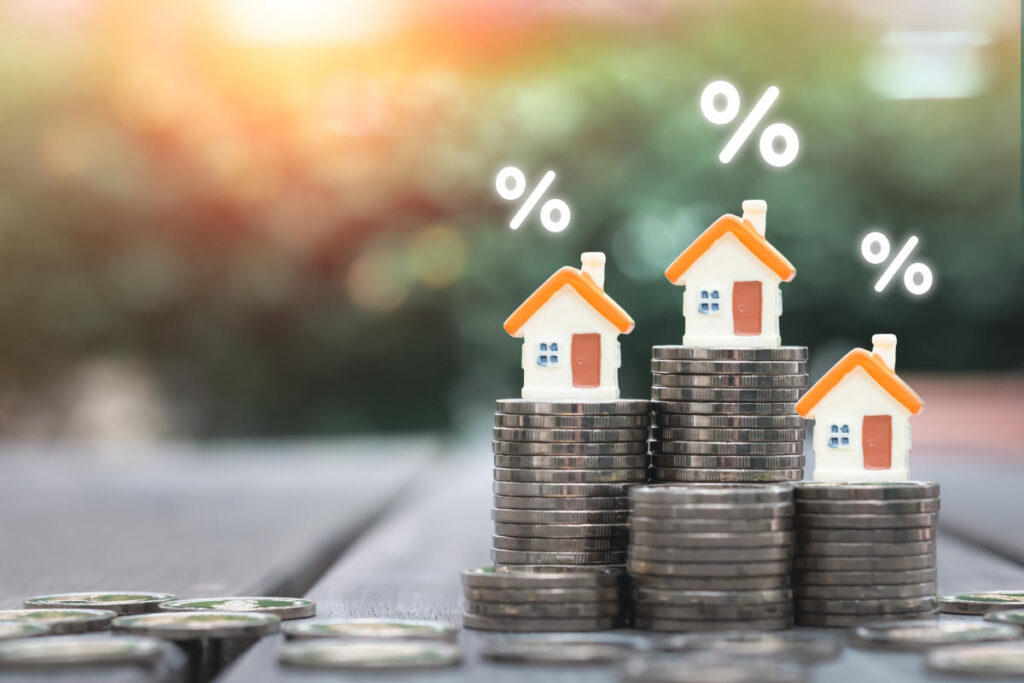Owning a home involves significant financial responsibilities, influenced by various costs beyond the mortgage principal itself, such as property tax, homeowners insurance, and, crucially, the mortgage interest rate. The interest rate represents the cost charged by the lender for borrowing money, and understanding how this rate is determined is vital for prospective homebuyers and those considering refinancing their mortgages. The relationship between mortgage interest rates and monthly payments is profound—lower rates equate to reduced monthly payments, making homeownership more accessible. For example, financing a $400,000 mortgage can reflect dramatically different monthly payments at various interest rates, underscoring the crucial role mortgage rates play in overall housing affordability.
Mortgage rates are not static; they fluctuate frequently due to numerous factors, which can shift multiple times within a single day. Historical context reveals the stark contrast in rates, from a peak of 18.63% in October 1981 when economic conditions were particularly dire, to the lows experienced during the COVID-19 pandemic’s housing market in 2020 and 2021. Current trends indicate that buyers should anticipate rates of 6% or more in the immediate future, with forecasts of gradual decreases into 2025. Factors influencing these trends include external economic variables that play into the overarching mechanisms of lending and borrowing, including investor sentiment and economic indicators.
Key players in the determination of mortgage rates include the Federal Reserve, particularly its actions concerning the federal funds rate—which influences how banks lend to each other. These rates often correlate with mortgage interest rates, even if not directly impacting them. When the Fed lowers rates, mortgage rates may decrease. However, market dynamics can complicate this correlation; past expectations about rate cuts can already be reflected in current mortgage rates, sometimes leading to stagnation even during periods of institutional rate reductions. Additionally, demand for mortgage-backed securities (MBS)—investments linked to home loans—plays a crucial role. Increased demand generally leads to lower yields and consequently lower mortgage rates, while decreased demand can raise rates.
Other factors affecting mortgage rates include long-term economic conditions, inflation rates, and governmental policies. Inflation typically causes lenders to increase rates to compensate for loss of purchasing power, with the expectation of future inflation being a decisive factor. Furthermore, strong economic indicators like low unemployment can stimulate demand for mortgages, consequently increasing rates. Conversely, in periods of economic downturn or low inflation, mortgage rates tend to decrease, exemplifying the economic pressures faced by both lenders and borrowers. Global events can also sway investors towards more stable assets, influencing mortgage rates in the U.S. Financial markets react not only to domestic conditions but also to international stability.
Your specific mortgage features—such as term length, type of loan, loan amount, and down payment—also distinctly influence the interest you pay. Generally, shorter-term loans carry lower rates, while larger loans might see higher rates due to increased lender risk. A robust down payment typically results in lower rates, as it mitigates the perceived risk to lenders. Variations arise between fixed and adjustable-rate mortgages, with fixed rates often slightly elevating due to their stability. Individual borrower characteristics are equally important; a historically responsible credit score can lead to more favorable interest rates, while the debt-to-income ratio can present a clearer picture of a borrower’s risk.
Lender-specific factors further refine interest rates, highlighting the importance of shopping around for the best deal. Larger banks might carry higher operational costs that translate into higher rates, while smaller lenders may offer lower rates to attract clients. Variability between lenders—often characterized by their profit margins—can lead to significant differences, sometimes several percentage points, depending on whom you choose. To secure the best rates, homebuyers should focus on improving their credit score, reducing existing debt, and saving for larger down payments; applying for quotes on the same day can provide a clearer understanding of prevailing market conditions.
Lastly, once a borrower has selected a mortgage, they have options to lock in their rate, ensuring it remains unchanged until closing. This step is particularly important in a volatile market where rates fluctuate daily, and a lock can offer financial certainty amidst uncertainty. Borrowers can opt for discount points to lower initial rates; paying upfront for points often leads to reduced long-term mortgage expenses. Refinancing can offer further opportunities to secure better rates post-purchase. Ultimately, understanding mortgage rate dynamics alongside market conditions empowers buyers to make informed decisions in the ever-changing landscape of home purchasing and refinancing.

